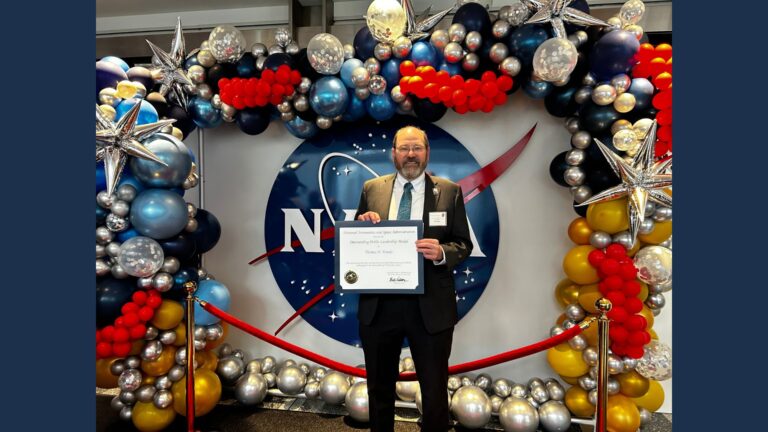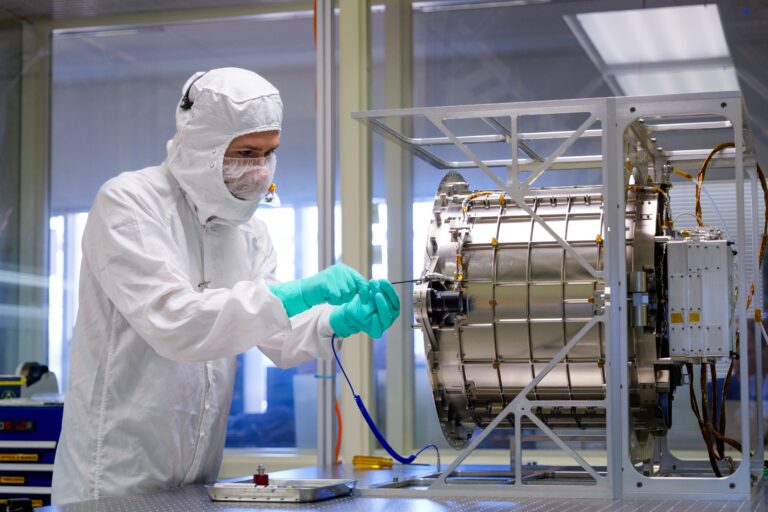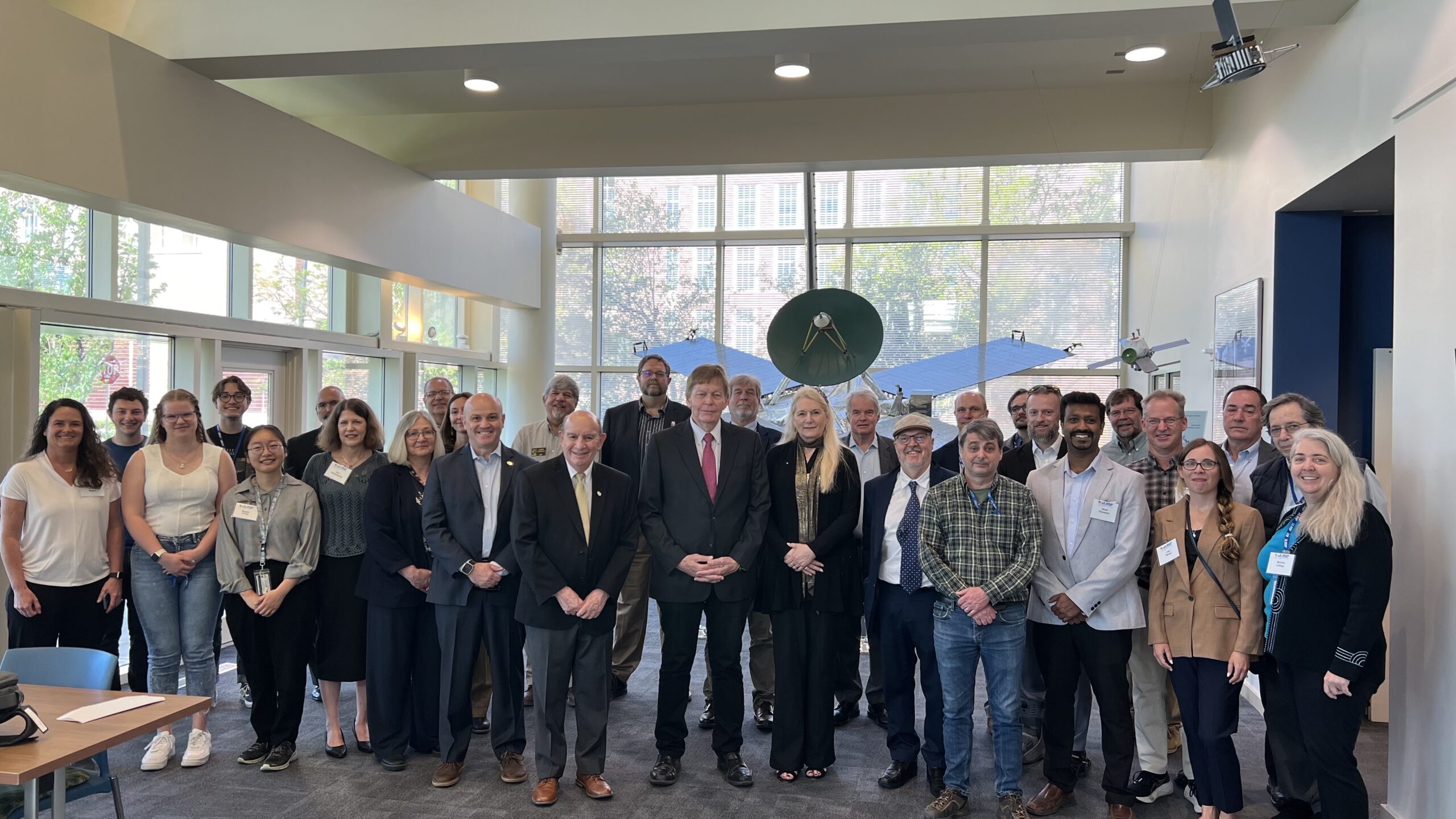
The Committee on Space Research (COSPAR) has designated the Laboratory for Atmospheric and Space Physics (LASP) at the University of Colorado Boulder a COSPAR Center of Excellence for Capacity Building in CubeSat Technologies. The partnership was announced by COSPAR President Pascale Ehrenfreund at a ceremony at LASP, which was attended by University of Colorado Boulder administrators, LASP senior leadership and scientists, and representatives from industry and NASA.
“For decades, the work of the Committee on Space Research has been a critical part of the international collaborations that are necessary to advance science and develop new space disciplines,” said University of Colorado Boulder Chancellor Phillip DiStefano in opening remarks at the LASP Space Technology Building. “It is exciting to have the opportunity to advance global collaboration through our work specifically with small satellites, and CU Boulder is thrilled to be recognized as COSPAR’s first Center of Excellence for Capacity Building in CubeSat Technologies.”
In announcing the partnership, Ehrenfreund cited LASP’s record of pioneering CubeSat missions and its leadership in the International Satellite Program in Research and Education (INSPIRE), a consortium of universities around the world formed to advance space science and engineering and further space science education in developing countries, which is spearheaded by CU Boulder and led by Amal Chandran, LASP CubeSat Program lead.
“It is an honor and a privilege for LASP to be named the first COSPAR Center of Excellence for Capacity Building in CubeSat Technologies,” said LASP Director Dan Baker. “With science returned on all our small satellite missions to date, and a proven record of successfully miniaturizing a range of scientific instruments, LASP has become an established leader in the SmallSat revolution. We’re dedicated to using this expertise to build small satellite capacity to further scientific discovery and train the next generation of space scientists.”
The INSPIRE program was founded with the help of seed funding from the University of Colorado Provost’s Office in 2015. The program joins students, instructors, universities, industry, and space agencies around the world in an endeavor to educate new engineers and scientists, build and launch new space missions, and drive leading-edge scientific discovery and technology.
Speaking on behalf of University of Colorado Provost Russ Moore at the event, Vice Chancellor for Academic Resource Management Ann Schmiesing said, “CU is proud to continue LASP’s long legacy of achievement in this exciting effort, and to play a vital role in this international capacity-building program, which will foster professional links and global collaboration.”
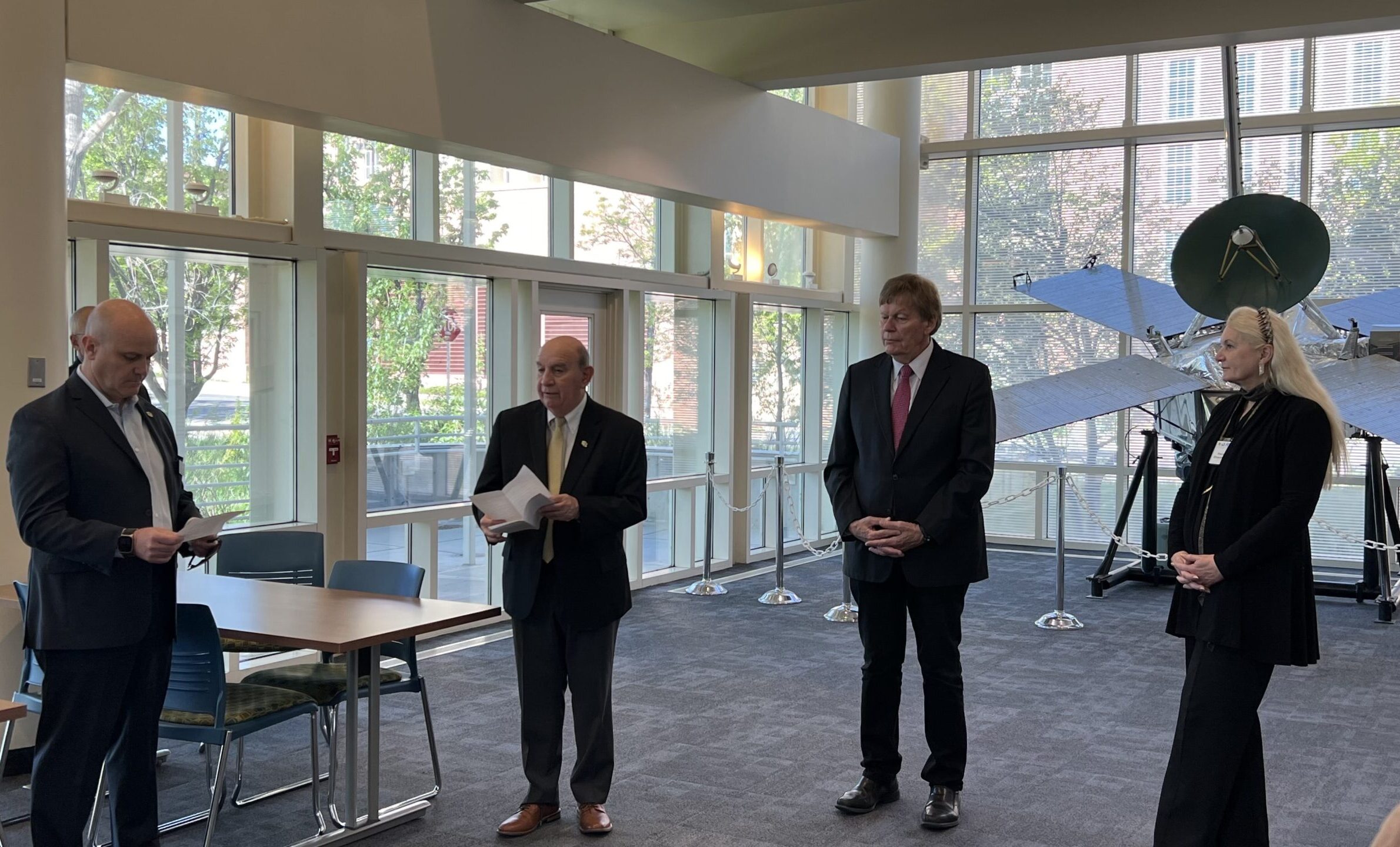
As of 2023, 43 COSPAR capacity building workshops have been held in 22 developing countries, with participation by more than 1,200 students from 70 countries.
“Establishment of the COSPAR Center of Excellence aligns with COSPAR’s recent efforts in small satellites, specifically targeting institutes and universities in developing countries to engage in CubeSat technology development,” Ehrenfreund said. “It will help make space exploration accessible to everyone and empower the next generation of space scientists and engineers.”
Carlos Gabriel, Chair of the COSPAR Panel on Capacity Building, spoke about fostering excellence in developing countries, sharing scientific knowledge, and building capacity in science, which can also lead to improvements in applied science, health, and education.
“While space science can be expensive, participation is possible on different scales, for example, through developing scientific instruments and encouraging scientists to use data from space missions,” Gabriel said. “Additionally, students can learn data analysis and software development.”
This summer, the first joint COSPAR-LASP SmallSat summer school will be held at LASP, with five COSPAR-sponsored interns from the National University of Engineering in Lima, Peru. The students will work on COSPAR satellites that will provide space weather data as part of the COSPAR Task Group for establishing a Constellation of Small Satellites (TGCSS), of which Baker and Chandran have been chair and vice chair, respectively, since its inception in 2020.
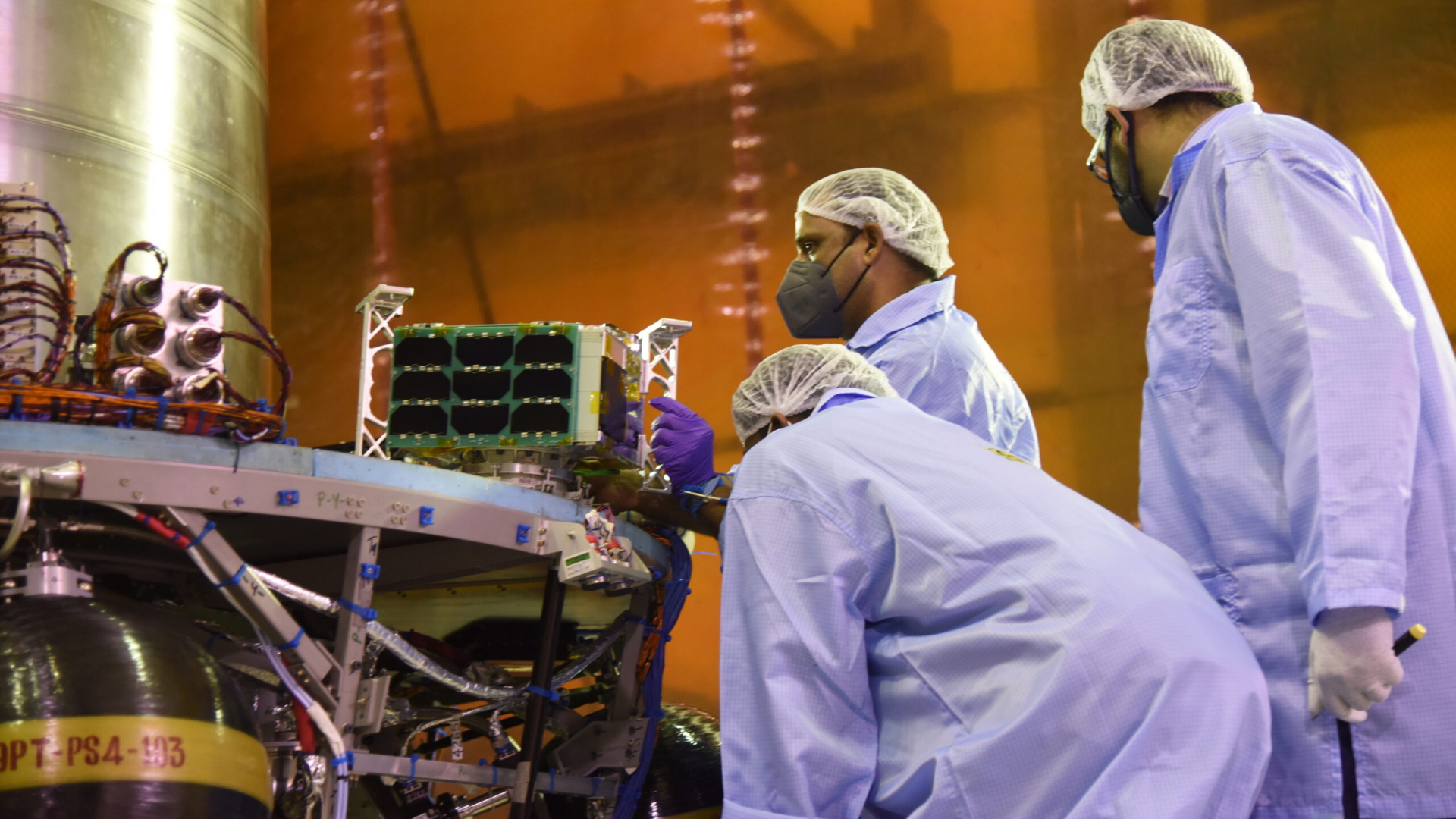
The event also included tours of LASP facilities, a lunch with students and early career staff, and presentations on LASP SmallSat Programs including CSSWE/CIRBE by Xinlin Li, CUTE by Kevin France, DYNAGLO by Aimee Merkel, and MinXSS-3 (DAXSS), which is part of the payload of INSPIRESat-1, by Bennet Schwab.
The INSPIRE program aims to provide a constellation of Earth and space weather observing satellites and develop a university microsatellite platform to address some of the outstanding questions in quantifying climate change, atmospheric coupling processes, and space weather effects. INSPIRE offers participating universities and industry partners the opportunity for cutting-edge research in the earth sciences and developing spacecraft technologies.
Current INSPIRE universities are: University of Colorado Boulder; University of Iowa; University of Alberta, Canada; University of Versailles, France; Sultan Qaboos University at Muscat, Oman; The Indian Institute of Space Science and Technology, India; Nanyang Technological University, Singapore; The National Central University, Taiwan; Kyushu Institute of Technology, Japan; Research Centre Jülich, Wuppertal University, Germany.
-By Sara Pratt, Senior Communications Specialist
Founded a decade before NASA, the Laboratory for Atmospheric and Space Physics at the University of Colorado Boulder is on a mission to transform human understanding of the cosmos by pioneering new technologies and approaches to space science. The institute is at the forefront of solar, planetary, and space physics research, climate and space-weather monitoring, and the search for evidence of habitable worlds. LASP is also deeply committed to inspiring and educating the next generation of space explorers. From the first exploratory rocket measurements of Earth’s upper atmosphere to trailblazing observations of every planet in the solar system, LASP continues to build on its remarkable history with a nearly $1 billion portfolio of new research and engineering programs, backed by superb data analysis, reliable mission operations, and skilled administrative support.

